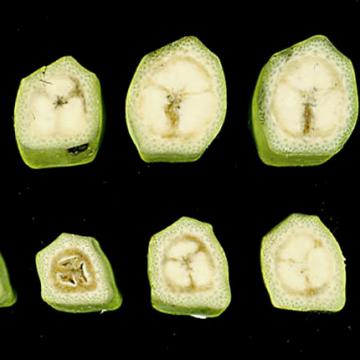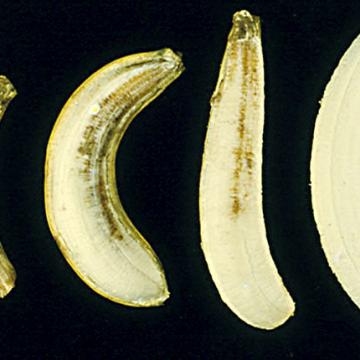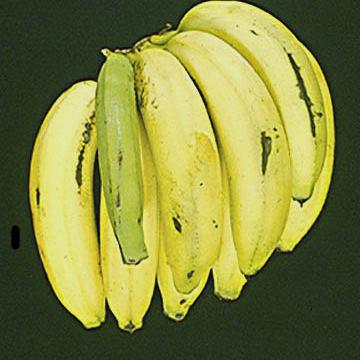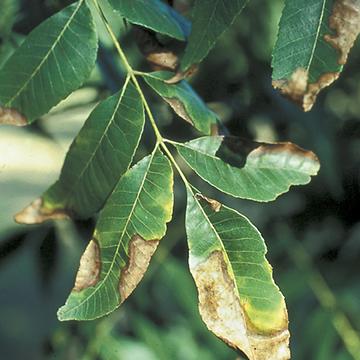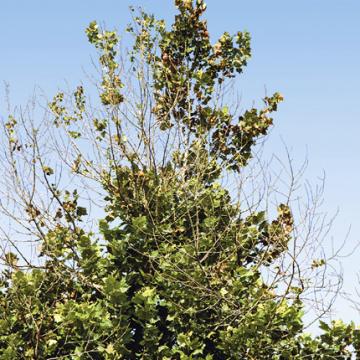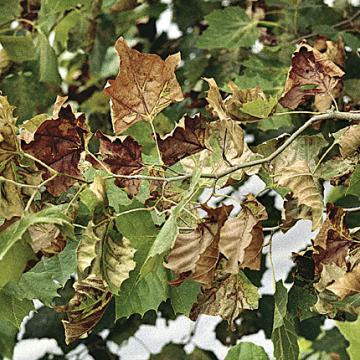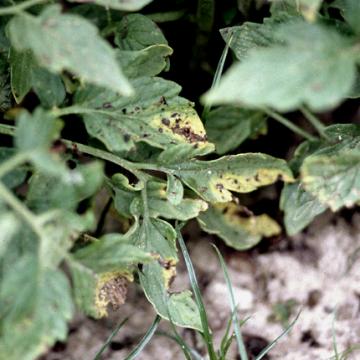DISEASE: Bacterial finger-tip rot
HOST: Banana
Cross sections of fruit with internal discoloration and rot. This disease is also known as Mokillo disease.
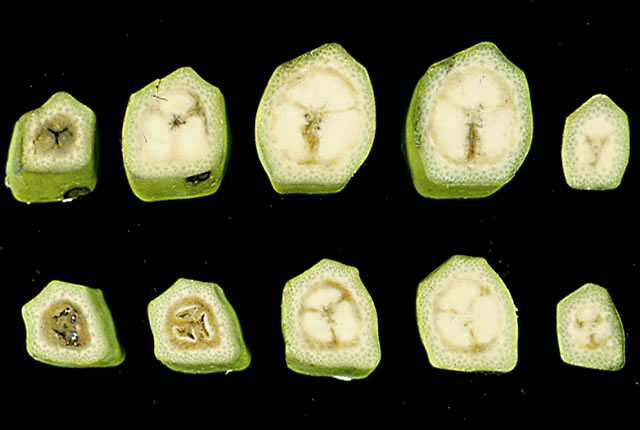
Bacterial finger-tip rot | Banana
DISEASE: Bacterial finger-tip rot
HOST: Banana (Musa sp.)
PATHOGEN: Burkholderia cenocepacia
PATHOGEN SYNONYM: Pseudomonas cenocepacia
SOURCE: I. Buddenhagen
DISEASE: Bacterial finger-tip rot
HOST: Banana
Longitudinal sections of fruit with internal discoloration and rot. Healthy (right).
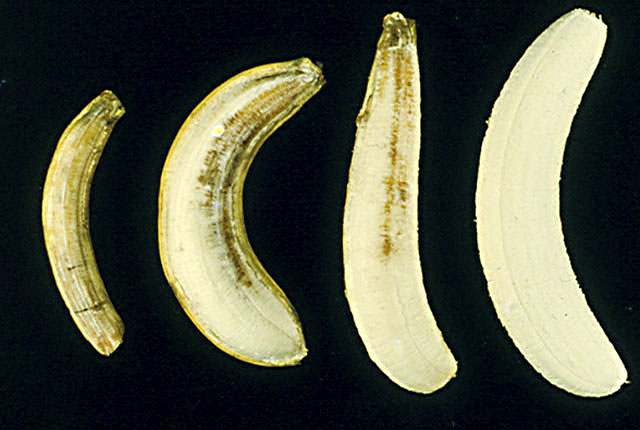
Bacterial finger-tip rot | Banana
DISEASE: Bacterial finger-tip rot
HOST: Banana (Musa sp.)
PATHOGEN: Burkholderia cenocepacia
PATHOGEN SYNONYM: Pseudomonas cenocepacia
SOURCE: I. Buddenhagen
DISEASE: Bacterial finger-tip rot
HOST: Banana
Diseased banana hand with external discoloration.
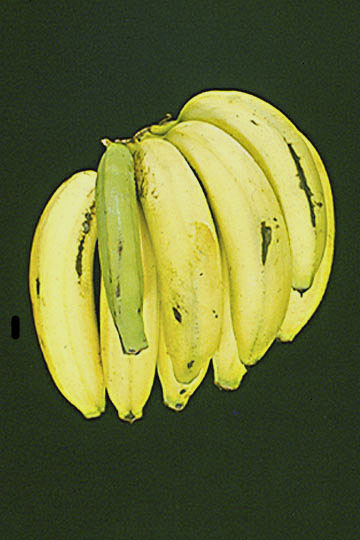
Bacterial finger-tip rot | Banana
DISEASE: Bacterial finger-tip rot
HOST: Banana (Musa sp.)
PATHOGEN: Burkholderia cenocepacia
PATHOGEN SYNONYM: Pseudomonas cenocepacia
SOURCE: I. Buddenhagen
DISEASE: Bacterial leaf scorch
HOST: Pecan
Pecan with necrotic scorched leaves with distinct dark lines between healthy and diseased tissues.
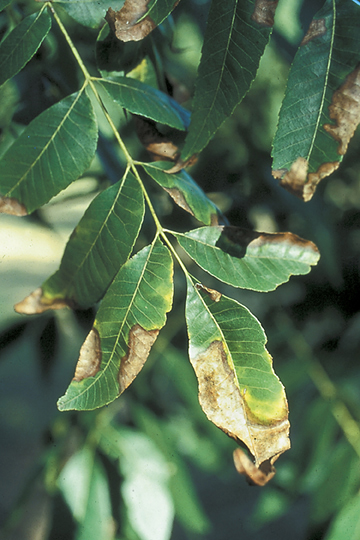
Bacterial leaf scorch | Pecan
DISEASE: Bacterial leaf scorch
HOST: Pecan (Carya illinoinensis)
PATHOGEN: Xylella fastidiosa
SOURCE: T. Brenneman
DISEASE: Bacterial leaf scorch
HOST: Sycamore
Sycamore with scorched leaves and dieback of small branches.
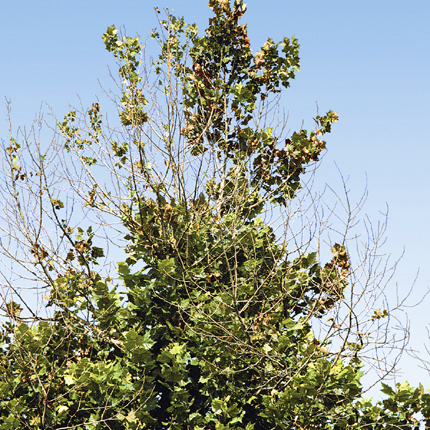
Bacterial leaf scorch | Sycamore
DISEASE: Bacterial leaf scorch
HOST: Sycamore (Platanus occidentalis)
PATHOGEN: Xylella fastidiosa
SOURCE: W. Sinclair
DISEASE: Bacterial leaf scorch
HOST: Sycamore
Close-up of scorched leaves.
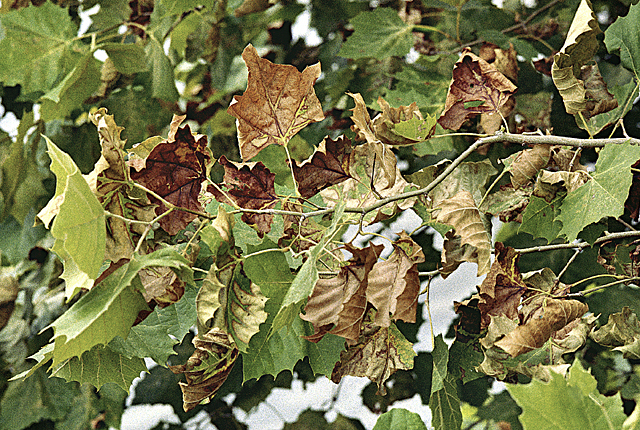
Bacterial leaf scorch | Sycamore
DISEASE: Bacterial leaf scorch
HOST: Sycamore (Platanus occidentalis)
PATHOGEN: Xylella fastidiosa
SOURCE: W. Sinclair
DISEASE: Syringae leaf spot
HOST: Tomato
Leaves with brown necrotic lesions and chlorotic margins. Symptoms vary greatly among cultivars. Some have black or brown lesions with bright yellow, chlorotic areas and others do not have yellowing.
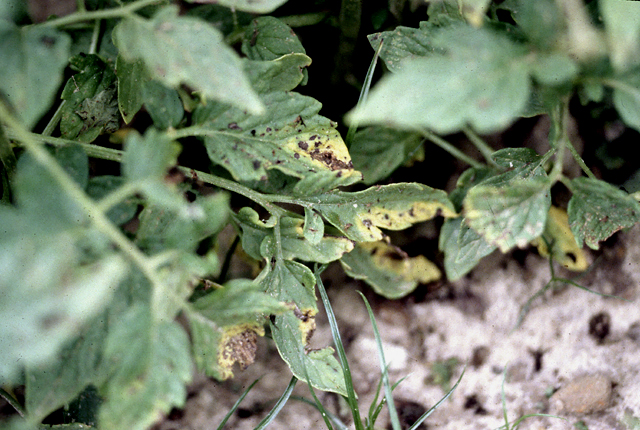
Syringae leaf spot | Tomato
DISEASE: Syringae leaf spot
HOST: Tomato (Lycopersicon esculentum)
PATHOGEN: Pseudomonas syringae pv. syringae
SOURCE: R. Gitaitis


